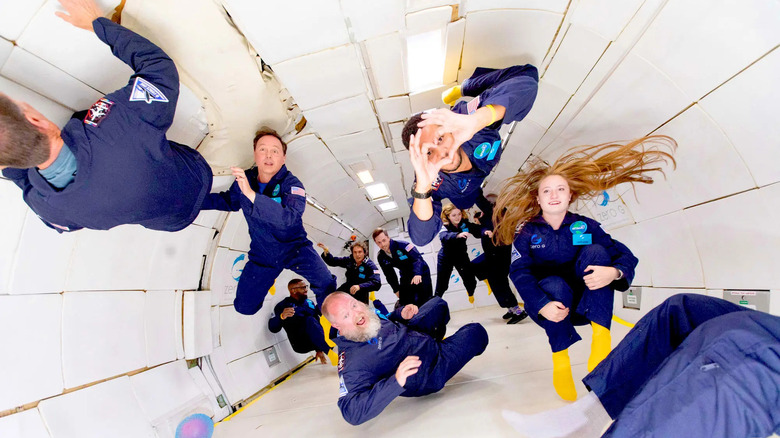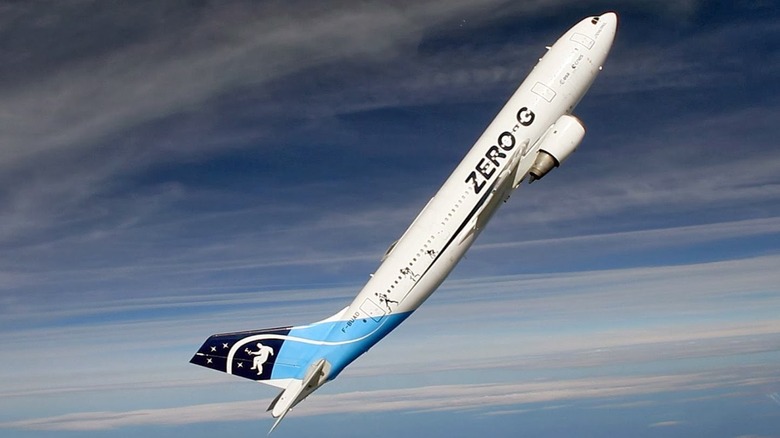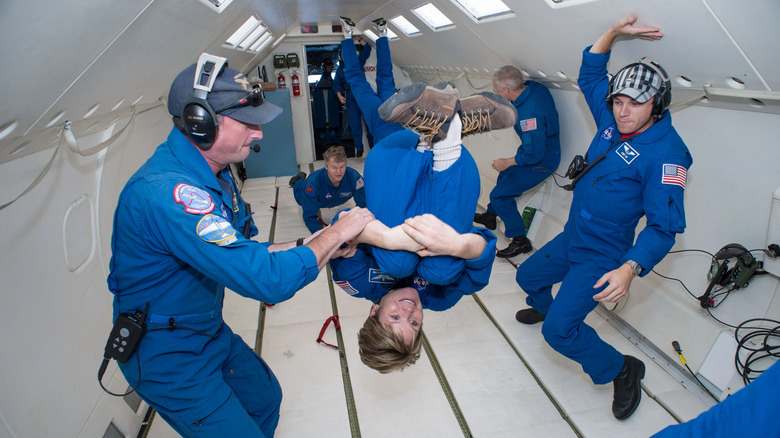Can An Airplane Simulate Zero Gravity Flight?
We've all had dreams of being up in space and experiencing the freedom of zero gravity, no longer bound by the strange force that keeps us stuck on the ground. But this experience is limited to the few astronauts who go up into space each year. Or is it?
As it turns out, you don't actually need to leave Earth to experience zero gravity. Specially designed airplanes can recreate the same sensation through a controlled maneuver called a parabolic flight. Rather than cruising steadily like a commercial flight would, these aircraft fly in steep arcs that climb and dive in carefully controlled sequences, replicating a parabolic curve. Each parabola gives passengers around 20 to 22 seconds of unrestricted weightlessness as the aircraft dives and enters free fall. These flights are used to test equipment, train astronauts, or by thrill seekers wanting to experience the rare sensation of floating in midair.
Companies such as Zero Gravity Corporation in the U.S. operate modified Boeing 727s, while Europe's Novespace uses an Airbus A310 for its "Zero-G" flights. These flights may not take you to space, but they can simulate the effects.
How parabolic maneuvers create weightlessness
The science behind flights in zero gravity is surprisingly simple. The plane creates microgravity by following a parabolic path where it climbs steeply at an angle of about 45 to 50 degrees, then smoothly reduces engine thrust as it arcs over, and finally dives at the same angle. Hypergravity is the feeling that passengers have when they are climbing and pulling out, which is almost twice their normal weight. But at the top of the parabola, it seems like gravity doesn't exist.
For about 20 seconds, passengers, test equipment, and even droplets of water float inside the cabin together. Because the plane and everything inside it fall at the same rate, there is no force pushing back, thus mimicking the free-fall conditions of space. Pilots can also adjust the trajectory to simulate the gravity you would feel on the Moon (0.16 g) or Mars (0.38 g), another reason why Zero-G flights are great for research.
Due to the unique flying conditions of parabolic flights, the airplane requires a three-man crew to keep the aircraft stable. The mechanical precision of the pilots is what creates the repeatable and controlled environment where researchers can study the effects of space on the human body and how machines and materials behave outside Earth's constant pull.
Research, training, and tourism in zero g
Parabolic flights are more than just a novelty. They are a crucial part of NASA's research on space technologies and the human body in space. Experiments that might be impossible on the ground, like fluid dynamics to robotics, become feasible in the brief windows of reduced gravity.
The commercial side is growing, too. Zero Gravity Corporation runs flights open to the public, marketing them as the closest thing to space travel without a rocket. Europe's AirZeroG offers similar programs, including specialized research campaigns for scientists. Ticket prices remain steep, often running several thousand dollars per seat, but they give civilians a chance to float like astronauts and even experience simulated lunar and Martian gravity. While it may not be as extravagant as commercial space travel, it gets you pretty close.
Whether for science or thrill-seeking, parabolic flights prove that zero gravity isn't confined to orbit. With a bit of careful piloting and the right aircraft, airplanes can temporarily bend the rules of gravity, bringing space a little closer to Earth.


